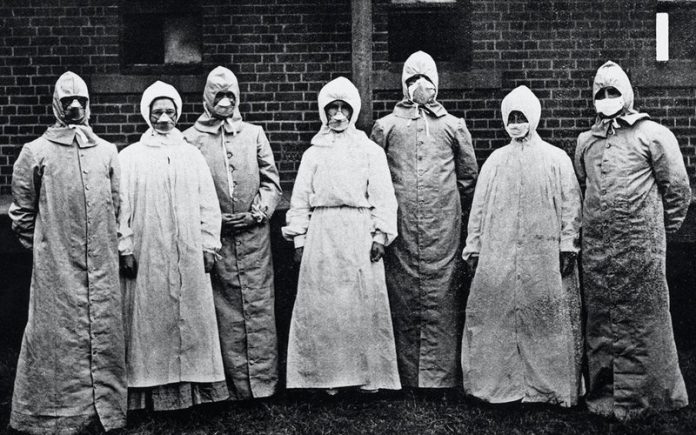
The memory of the Covid-19 pandemic will likely be seared onto the memory of anyone living today. Economies have been brought to a standstill, daily life has been disrupted and over a million people have lost their lives.
But this is not the unprecedented event many believe it is. Although it is a once-in-a-lifetime occurrence, human history is rife with deadly pandemics. It really goes to show that no matter our achievements and technical developments, we are still at the mercy of nature.
Read on to find out about the five deadliest pandemics ever recorded in human history, starting with the highest death toll.
1. The Black Death (75 million to 200 million dead)

The Black Death plague raged throughout Europe, Asia and Africa from 1347 to 1352 and was believed to be caused by the bubonic plague transmitted by fleas on rats. In less than a decade, it decimated communities around the world as it was transmitted along the global trade routes.
Called “the greatest catastrophe ever” by the British magazine History Today, the sheer number of victims is astounding. To put it into context, present-day Malaysia has a population of 31.6 million, and the Black Death killed 75 to 200 million people.
The sheer speed of the pandemic’s spread is akin to something out of a horror movie, and it did not help that the people of the time did not understand the true cause of their suffering and resorted to pointless, ineffective measures to try and save themselves.
2. New World smallpox (25 million to 55 million dead)

When the Europeans first invaded the Americas, conflict broke out as the invaders seized the land from the indigenous peoples for themselves.
But it was not guns and swords that defeated the native populations. It was smallpox, measles and other deadly viruses that the Europeans introduced to the indigenous Americans who lacked immunity to the microbial onslaught.
According to some historical studies, about 80% to 95% of the Native American population was destroyed by the disease about a century after Columbus stumbled upon the Caribbean in 1492.
Entire populations and communities were wiped out, and it was the few survivors who had to pick up the pieces and desperately fight off the invading European settlers.
3. The 1918 influenza epidemic (50 million dead)

It is a common misconception that the Spanish Flu, a deadly strain of influenza that became a global pandemic in 1918, originated in Spain. Spain was actually the first country to identify the deadly disease and warn the world of its emergence.
However, the world was embroiled in World War I at the time so little attention was paid to the pandemic. As a result, more people died from the disease than the war itself, with the flu striking in two deadly waves.
Just as we are doing today, social distancing and quarantines were encouraged to curb the spread of the flu, as was the wearing of face masks.
4. Plague of Justinian (30 million to 50 million dead)

Named after the ruling emperor of the Byzantine Empire, the Plague of Justinian in the sixth century is believed to be the first episode of bubonic plague. While historical court records detailing the horrors of the plague are scarce, the diaries of the people living back then tell a grim story.
Many believed that the end days was nigh as thousands died per day in Constantinople. The Byzantine historian, Procopius, wrote of the plague, calling it, “A pestilence by which the whole human race was near to being annihilated”.
Even the Emperor himself was infected. He survived, though his domains were badly ravaged by the disease.
By the time the plague finally subsided, the empire was a shadow of itself, with food shortages and construction projects halted due to insurmountable deaths of farmers and labourers.
5. HIV/AIDS (35 million dead)

Since its discovery in the 1980s, the HIV virus responsible for causing AIDS, remains a challenge. Today, there are an estimated 38 million people living with HIV and about 35 million have died from AIDS-related causes since the beginning of the epidemic.
No cure has been found but drug regimens have been developed that can prevent HIV from becoming full-blown AIDS. But many people at risk still lack the information needed to prevent infection and the drugs are expensive, making it beyond the reach of many.
The social toll of HIV has also been heavy, with ignorance and misconceptions leading to the stigmatisation of and discrimination against HIV-positives.
The Covid-19 pandemic has also impacted the response to HIV/AIDS in many countries, with medical services focusing on combating the new pandemic.



